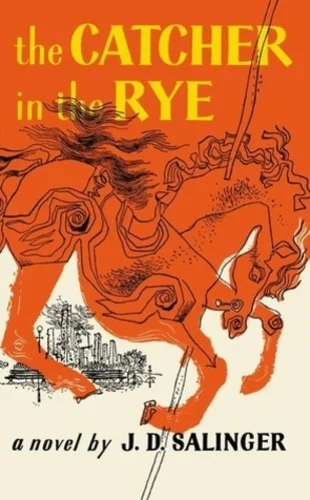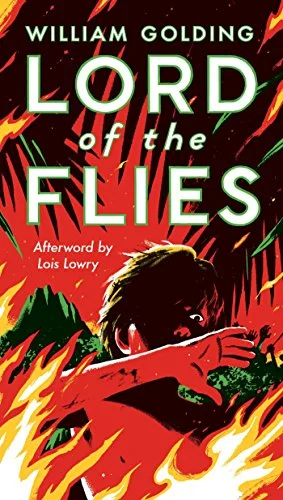J.D. Salinger’s The Catcher in the Rye is a novel rich in symbolism, introspection, and emotional undercurrents. While the book has sparked decades of analysis, one of its most memorable and quietly profound moments takes place near the end—when Holden Caulfield watches his younger sister, Phoebe, ride a carousel in Central Park.
Though seemingly simple on the surface, this scene carries a weight of symbolic meaning. The carousel represents innocence, the passage of time, and Holden’s shifting view on the inevitability of growing up.
The Carousel and the Circle of Innocence
A carousel moves in a circle, returning again and again to the same point. In literature, circular motion often symbolizes innocence and repetition—qualities of childhood that are untouched by the linear pressures of adult life. For Holden, who spends much of the novel rejecting the world of adults and yearning to protect the purity of children, the carousel becomes a comforting image.
Watching Phoebe ride, Holden is struck by her joy and freedom. She is unburdened by adult concerns, unaware of the complexities that weigh on her brother. The motion of the ride, its music, and the image of children reaching for the gold ring all reinforce this idea of a safe, contained experience—where risk is minimal, and happiness is found in simple repetition. The carousel, then, becomes a metaphor for the bubble of innocence Holden longs to preserve.
Change and the Acceptance of Growing Up
Earlier in the novel, Holden expresses a strong desire to be “the catcher in the rye”—a guardian who saves children from falling off a metaphorical cliff, which represents the loss of innocence. He wants to freeze time, to keep himself and those he loves in a perpetual state of youth. However, the carousel scene marks a subtle but critical shift in his thinking.
When Phoebe reaches for the gold ring—a traditional feature on old carousels that riders try to grab for a prize—Holden doesn’t intervene. He acknowledges that she might fall, but he allows her to try. This moment symbolizes a turning point in Holden’s character: the realization that he cannot protect children from every danger, nor should he try. Life involves risk, growth, and the potential for failure, but those elements are part of what makes it meaningful.
By not stopping Phoebe, Holden shows that he is beginning to accept the idea that growing up is both necessary and natural. The carousel becomes a symbol of that acceptance—a space where innocence and experience meet, without conflict or judgment.
Nostalgia and the Desire to Reclaim Simplicity
Throughout The Catcher in the Rye, Holden is consumed by nostalgia. He visits places from his past, reminisces about childhood memories, and frequently reflects on people he misses. The carousel, with its antique charm and old-fashioned music, taps directly into this yearning. It represents a piece of a world that hasn’t changed—a rare constant in a life filled with confusion and disillusionment.
For Holden, who sees so much of the adult world as “phony,” the carousel offers a form of authenticity. It is simple, joyful, and honest. The act of watching Phoebe ride becomes more than just a moment of quiet; it is an act of emotional grounding. Holden finds comfort in the familiar rhythm of the ride, in the enduring nature of something that existed before his own turmoil began.
The Gold Ring: A Subtle Lesson in Autonomy
One of the most important details in the carousel scene is the presence of the gold ring. As children ride, they are encouraged to stretch and try to grab it—a small risk with a small reward. In the context of the novel, the gold ring takes on layered meaning.
It symbolizes aspiration—the human tendency to reach beyond one’s grasp. For children, it is part of play, but for Holden, it represents the risks that come with growing up. His decision not to stop Phoebe from reaching for it marks a rare moment of emotional clarity. He understands that failure is not fatal, and that taking chances is part of living.
This is a significant moment of growth for Holden. Up to this point, he has been paralyzed by fear—fear of change, of loss, of imperfection. Letting Phoebe reach for the ring is a way of letting go, of allowing life to unfold without trying to control its outcomes. The gold ring, in this sense, becomes a symbol of autonomy and trust.
Contrasting Innocence With Cynicism
Holden is a character marked by deep cynicism. He criticizes nearly everyone he encounters, often retreating into judgment to protect himself from disappointment. But in the carousel scene, his defenses soften. Watching Phoebe, he experiences something pure—joy without irony, excitement without ulterior motive.
The carousel, spinning steadily as children laugh and reach for the ring, stands in contrast to the complicated world Holden has been navigating. It represents a return to a place of safety, where motives are clear and happiness is untainted. That Holden is moved by this scene suggests that he is not as hardened as he pretends to be. His vulnerability is revealed not in confession, but in observation.
This symbolic contrast adds richness to the narrative. It reminds the reader that beneath Holden’s sarcasm lies a deep sensitivity—one that responds to beauty, innocence, and the possibility of emotional renewal.
The Power of Observation and Stillness
Interestingly, Holden does not ride the carousel himself. He remains a spectator. This distinction is important. He is no longer a participant in childhood, but he is not fully immersed in adulthood either. His role is transitional—watching, learning, and beginning to understand.
This observational position reinforces the idea that Holden is evolving. Rather than trying to impose control or withdraw entirely, he allows himself to be present. The stillness of his stance contrasts with the movement of the carousel, suggesting that peace might come not from running or fighting, but from simply witnessing and accepting.
A Symbol of Surrender and Renewal
The carousel in The Catcher in the Rye is one of the novel’s most resonant symbols, capturing the essence of Holden Caulfield’s emotional journey. It represents innocence, but also the necessity of letting go. It speaks to the comfort of nostalgia, the inevitability of change, and the delicate balance between protection and freedom.
In allowing Phoebe to ride, to reach, and perhaps to fall, Holden surrenders some of his need for control. He embraces a more nuanced understanding of life—one that includes risk, growth, and the bittersweet beauty of fleeting moments.
Ultimately, the carousel is not just a ride. It is a metaphor for the human experience—spinning through time, offering joy, risk, and the chance to try again. And for Holden Caulfield, it marks the beginning of healing—not through revelation, but through quiet acceptance.


